site search
online catalog
ENGRAVED GOLD 20th CONNECTICUT REGIMENTAL BADGE WITH BATTLE HONORS OF LT. OLIVER TAYLOR DOOLITTLE
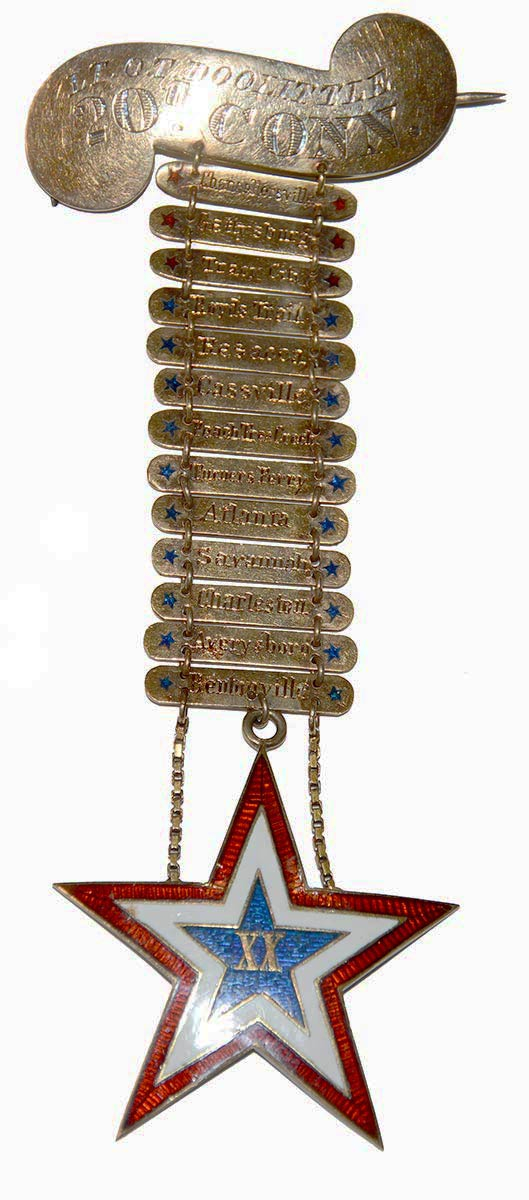
Hover to zoom

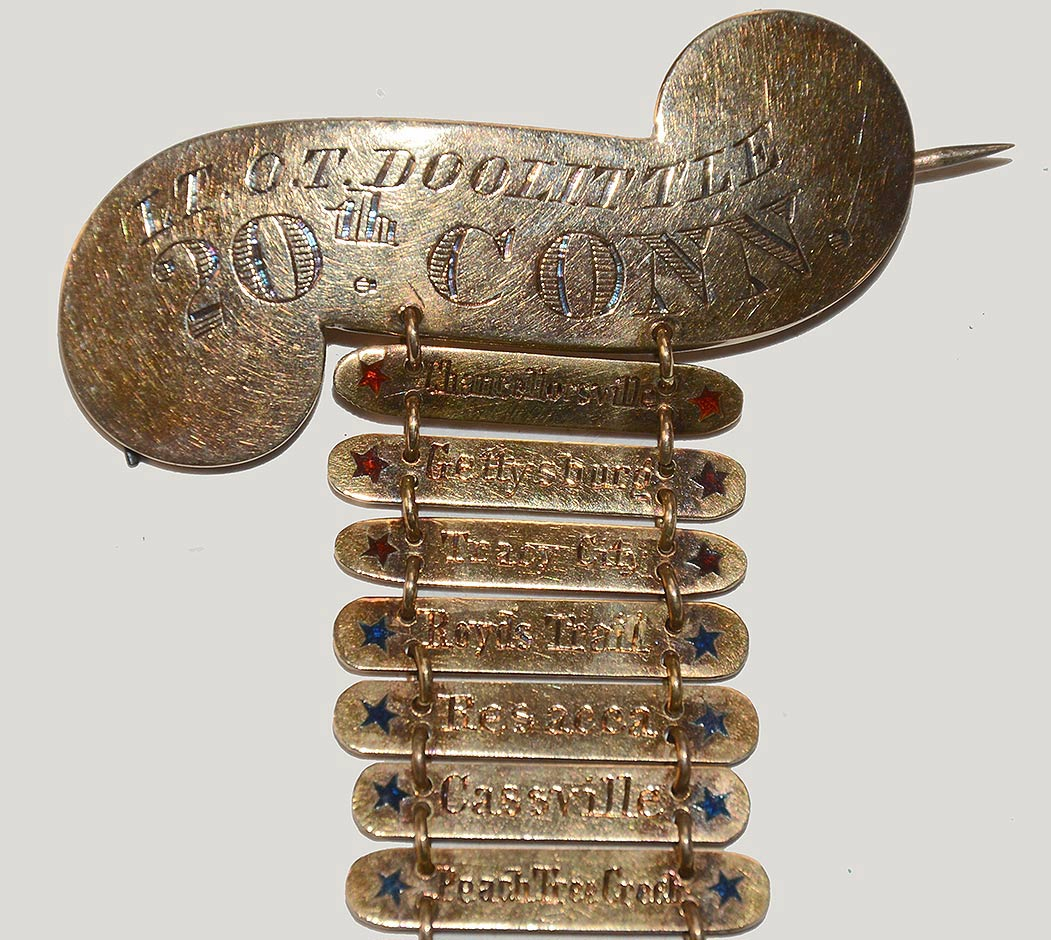
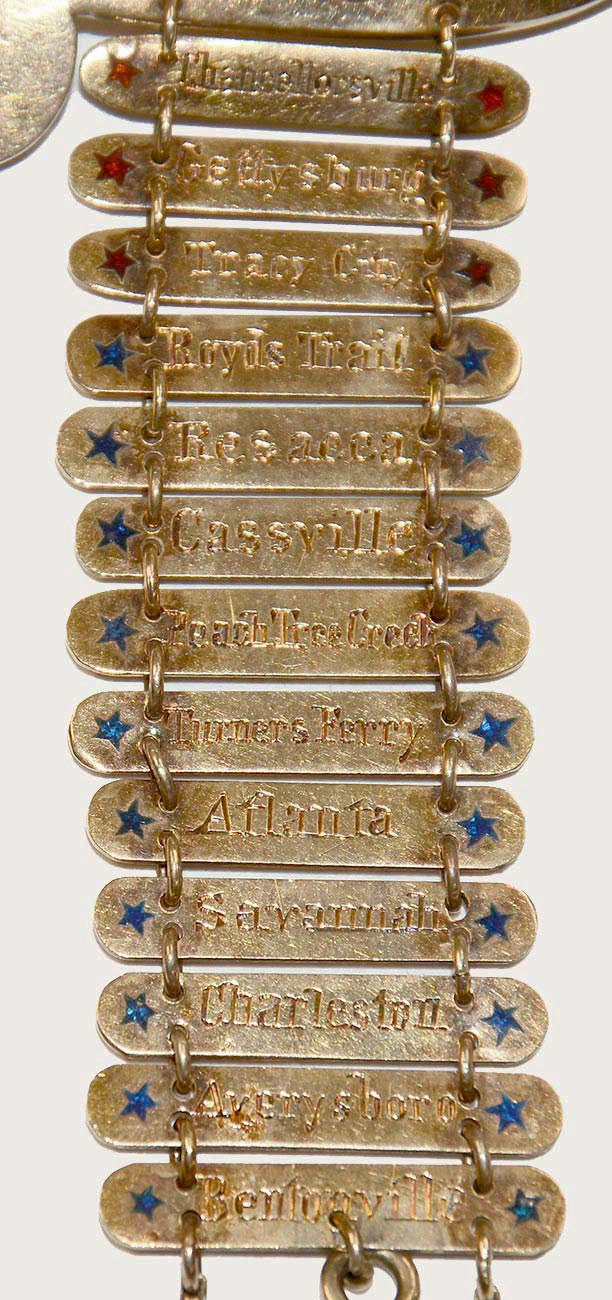
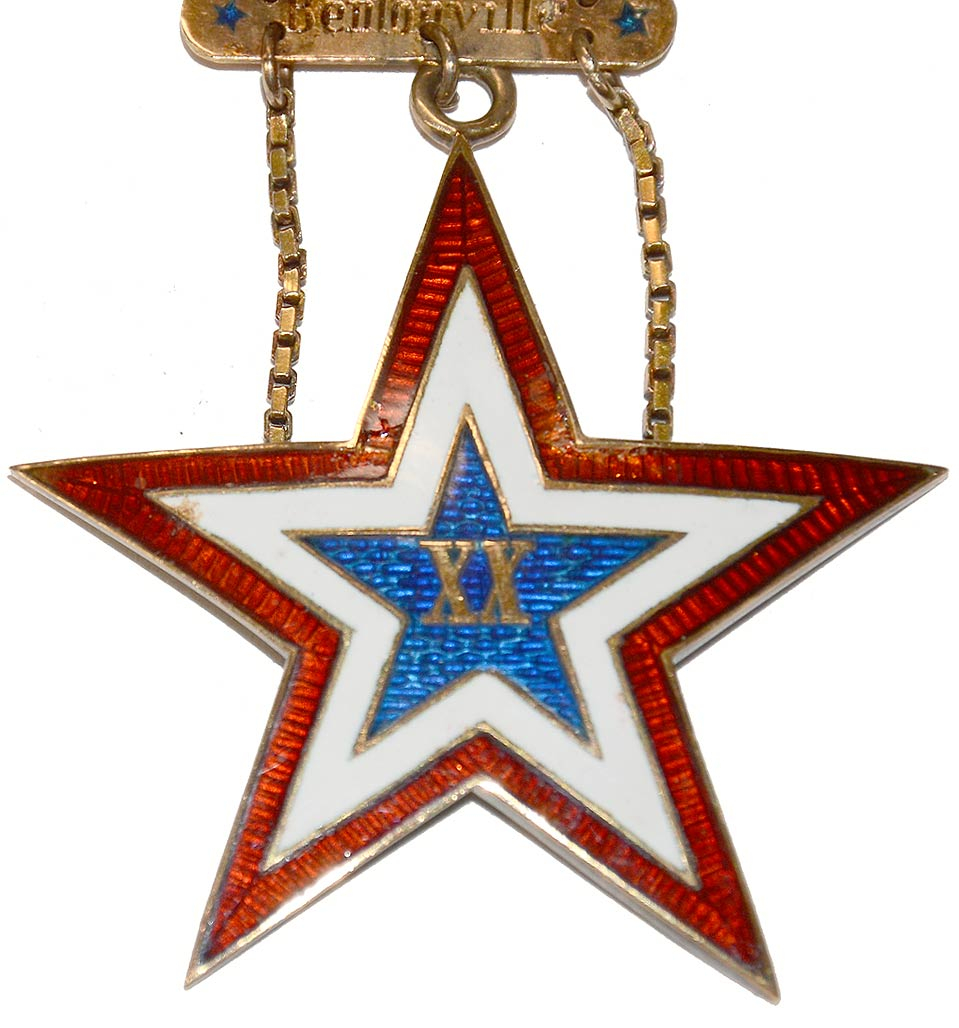
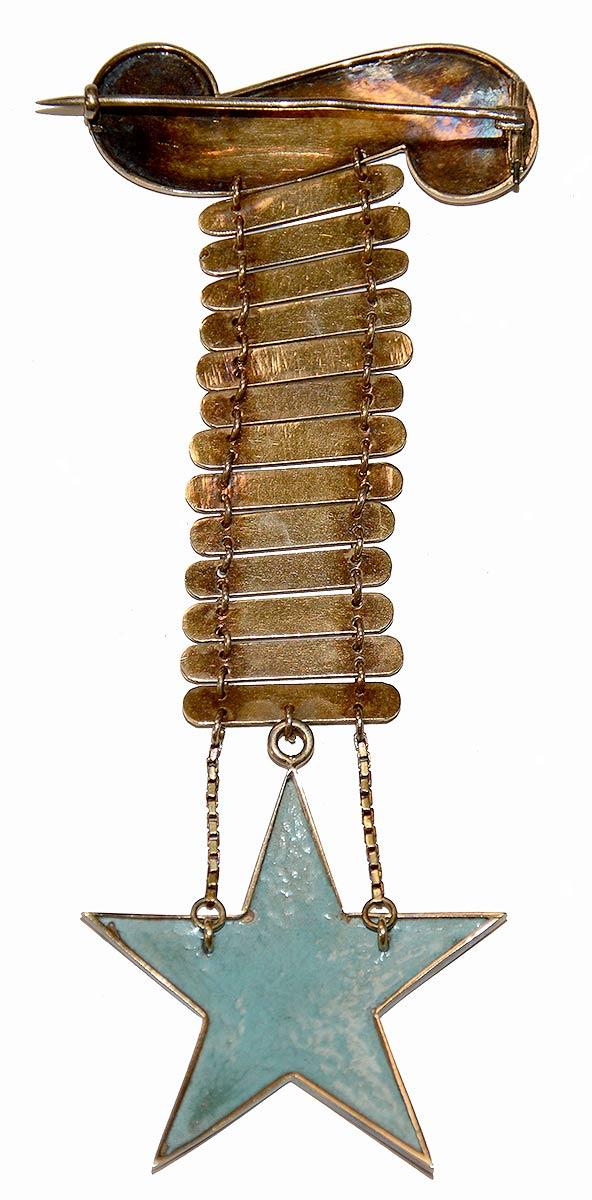
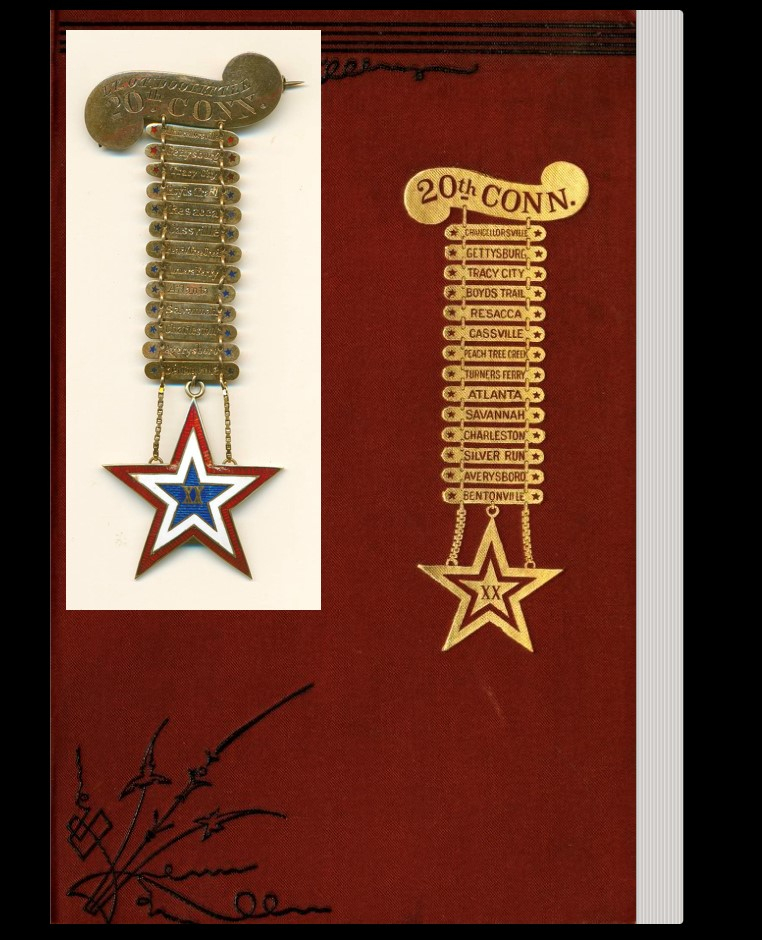
$5,500.00
Quantity Available: 1
Item Code: 622-434
Shipping: Determined by Method & Location of buyer
To Order:
Call 717-334-0347,
Fax 717-334-5016, or E-mail
This is a beautiful gold, engraved and identified regimental badge of the 20th Connecticut, which fought in the Army of the Potomac and Army of the Cumberland, seeing action at Chancellorsville, Gettysburg, the Atlanta Campaign, the March to the Sea, and the Campaign of the Carolinas. The soldier who owned it served with the regiment during its entire service, enlisting as sergeant and being commissioned a lieutenant before his discharge.
The veterans of the regiment were proud of their service and this badge, which appears in gilt blindstamping on the cover of their 1886 regimental history. The top, pinback, bar is a scroll silhouette engraved in small block letters in a curving line following the contour of the bar edge: “LT. O.T. DOOLITTLE.” Under this in larger, shaded block letters is “20th CONN.” Suspended from this by small links on either side are 13 small bars with rounded ends, each engraved with a battle honor and each bar having an impressed star at either end, the first three inlaid in blue and the following ten in red, to distinguish between the star used as the insignia of the 12th Corps, in which the regiment served from September 1862 until April 1864, and the star as insignia of the 20th Corps, in which it served from April 1864 to its muster out in June 1865. The bars read: Chancellorsville; Gettysburg; Tracy City; Boyd’s Trail; Resaca; Cassville; Peach Tree Creek; Turner’s Ferry; Atlanta; Savannah; Charleston; Averysboro; Bentonville. From the lowest bar is suspended by a central loop and chains at either side a gold star, enameled in red, white and blue with a gold “XX” at center, indicating the 20th Army Corps. With the exception of the soldier’s name, this is the exact badge pictured on the cover of the regimental history and in an engraving inside. [We include below a photo of this badge on top of the cover of the regimental history for comparison.]
Oliver T. Doolittle enlisted in the 20th Connecticut Volunteers from Cheshire, CT, on 7/14/62 and mustered into Co. A as a Sergeant on 9/8/62. There were a number of other Doolittles in the unit, including his older brother, Edward, who served as officer in companies I and K, and died in December 1863. Oliver was a sergeant during his active service, but was promoted to 1st Lieutenant on 5/4/65, though not mustered in at that rank before the regiment was discharged and he was mustered out at Fort Lincoln in Washington, DC, 6/13/1865. Born in Connecticut in 1840, he worked in a livery stable before the war. After discharge he changed his clientele from four-legged to two, and became both a merchant tailor and a hotel manager, running establishments in Connecticut and later in Kearney, NE, according to one genealogy. He married and had two daughters. By 1900 the family were living in Philadelphia, where listed himself as a “designer” in the census. He passed away in Philadelphia 1908 and was interred back in Connecticut. An unnamed source in that genealogy him as, “round faced, of ruddy complexion with thick curly snow-white hair. He was of medium height, sturdy, genial & dignified.”
Dyer’s Compendium gives the following summary of their assignments: organized at New Haven September 8, 1862. Left State for Washington, D.C., September 11. Attached to 2nd Brigade, 1st Division, 12th Army Corps, Army of the Potomac, to May, 1863. 1st Brigade, 1st Division, 12th Army Corps, Army of the Potomac, to October, 1863, and Army of the Cumberland to April, 1864. 1st Brigade, 1st Division, 20th Army Corps, Army of the Cumberland, April, 1864. 2nd Brigade, 3rd Division, 20th Army Corps, to May, 1864. 3rd Brigade, 3rd Division, 20th Army Corps, to June, 1865.
Dyer also gives the following summary of their service: duty in the Defenses of Washington till September 29, 1862. Moved to Frederick, Md., September 29, thence to Sandy Hook October 2. March to Fredericksburg, Va., December 10. Duty at Fairfax Station, Va., December 14, 1862, to January 19, 1863. Moved to Stafford C.H. January 19-23, and duty there till April 27. Chancellorsville Campaign April 27-May 6. Battle of Chancellorsville May 1-5. Gettysburg (Pa.) Campaign June 11-July 24. Battle of Gettysburg July 1-3. Near Raccoon Ford till September 24. Moved to Brandy Station, thence to Bealeton and to Stevenson, Ala., September 24-October 3. Guard duty along Nashville & Chattanooga R. R. till April, 1864. Action at Tracy City, Tenn., January 20, 1864 (Co. "B"). Atlanta Ga. Campaign May to September. Demonstration on Rocky Face Ridge May 8-11. Buzzard's Roost Gap May 8-9. Boyd's Trail May 10. Battle of Resaca May 14-15. Cassville May 19. Guard Ordnance Trains May 24-June 13, and provost duty at Ackworth, Ga., till July 8. At Marietta till July 16. Peach Tree Creek July 19-20. Siege of Atlanta July 22-August 25. Operations at Chattahoochee River Bridge August 26-September 2. Occupation of Atlanta September 2-November 15. March to the sea November 15-December 10. Siege of Savannah December 10-21. At Hardee's Plantation January 4-16, 1865. Campaign of the Carolinas January to April. Lawtonville, S.C., February 2. Reconnaissance to Silver Run Creek, N.C., March 14. Averysboro or Taylor's Hole Creek March 16. Battle of Bentonville March 19-21. Occupation of Goldsboro March 24, and of Raleigh April 14. Bennett's House April 26. Surrender of Johnston and his army. March to Washington, D.C. via Richmond, Va., April 29-May 20. Grand Review May 24. Camp near Fort Lincoln till June 13. Mustered out June 13, 1865.Regiment lost during service 4 Officers and 76 Enlisted men killed and mortally wounded and 3 Officers and 85 Enlisted men by disease. Total 168.
We note that at Chancellorsville they lost some 85 killed and wounded and the same number captured or missing. At Gettysburg they fought on Culp’s Hill for five hours, losing 28 killed and wounded. After transferring west they were in frequent skirmishes with guerrillas while guarding rail lines, fights that were no less dangerous and deadly for being small, and then took part in Sherman’s major campaigns. Boyd’s Trail, at the beginning of the Atlanta Campaign was a “sharp contest” and at Resaca claimed the honor of capturing four guns, and taking prisoners and guns in a charge at Peach Tree Creek, and claimed to be the first to enter Atlanta. At Silver Run, in the fighting around Averysboro, it lost 19 officers and men. At Bentonville, its last engagement, it lost 36 in killed, wounded or missing.
This is a wonderful badge, in superb condition, a great combination of craftsmanship, art, and history.
Please note the copy of the regimental history is not included. [sr] [ph:L]
~~~~~~~~~~~~~~~~~~~~~~~~~~~~~~~~~~~
THIS ITEM, AS WITH ALL OTHER ITEMS AVAILABLE ON OUR WEB SITE,
MAY BE PURCHASED THROUGH OUR LAYAWAY PROGRAM.
CLICK HERE FOR OUR POLICIES AND TERMS.
THANK YOU!
Inquire About ENGRAVED GOLD 20th CONNECTICUT REGIMENTAL BADGE WITH BATTLE HONORS OF LT. OLIVER TAYLOR DOOLITTLE
Most Popular
Historical Firearms Stolen From The National Civil War Museum In Harrisburg, Pa »
Theft From Gravesite Of Gen. John Reynolds »
Selection Of Unframed Prints By Don Troiani »
Fine Condition Brass Infantry Bugle Insignia »
featured item
RARE USN GOSPORT NAVY YARD PRIMING FLASK
Gosport Shipyard was the original name of the facility in Portsmouth, Virginia, that was founded in 1767, passed into the hands of Virginia in the Revolution, was leased from that state by the U.S. government in 1794, purchased by them in 1801 and… (490-6824). Learn More »


